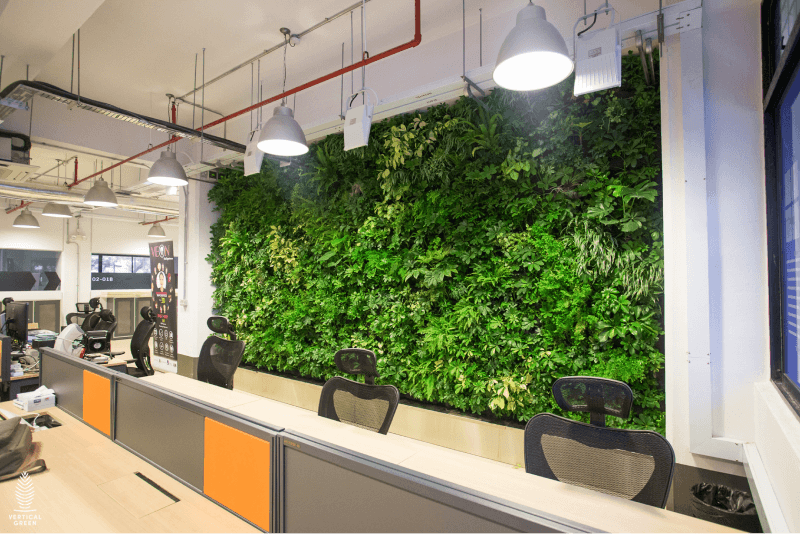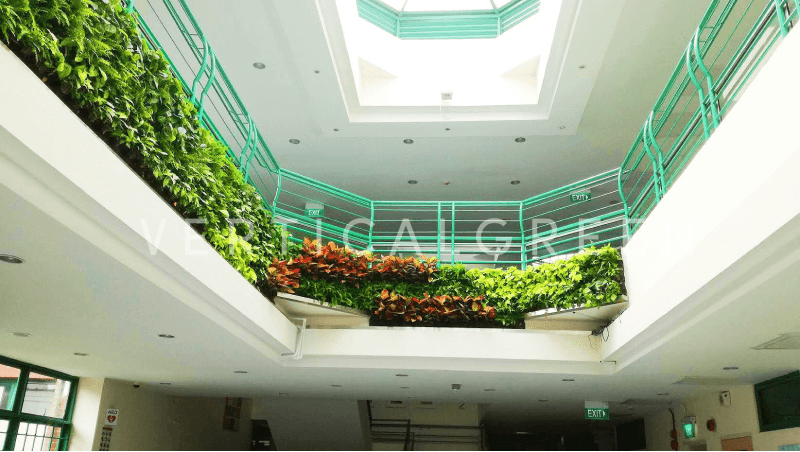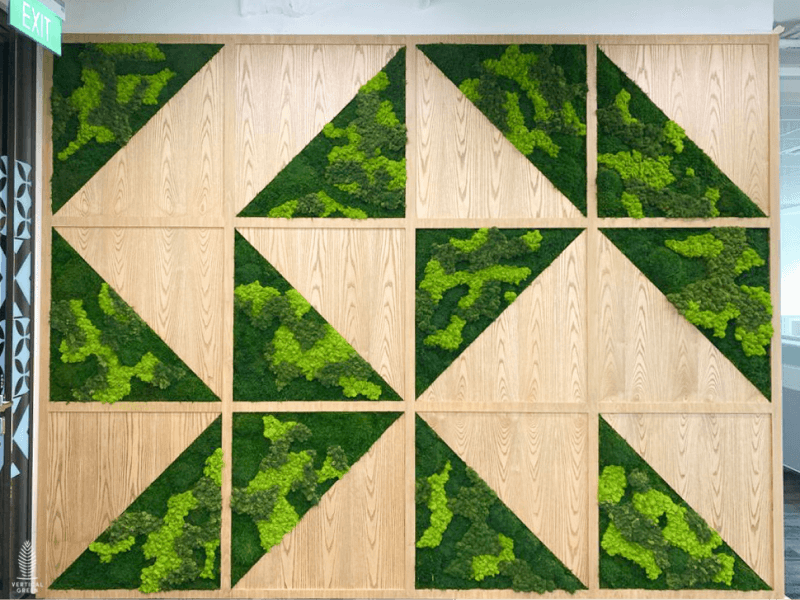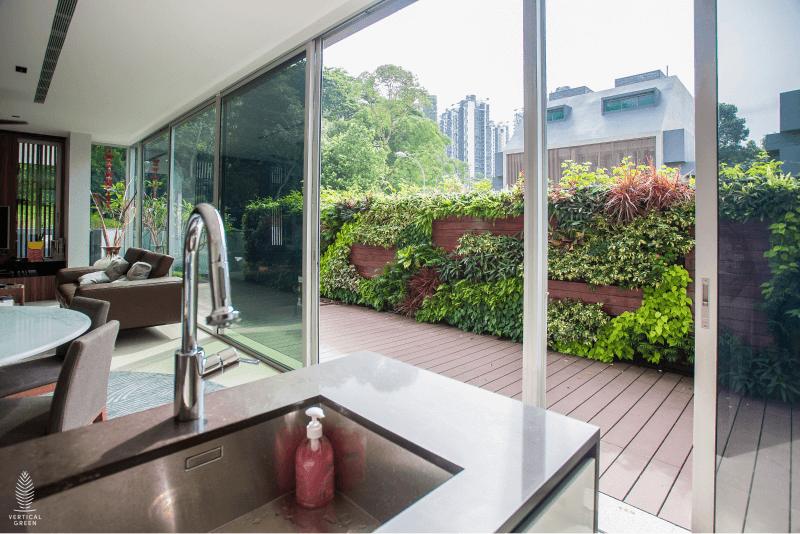Incorporating nature into our spaces has been a tried and tested way to improve the quality of our lives, which is why it’s no real surprise that the integration of biophilic designs in learning environments can help stimulate the growth and development of children and young adults in school.
As human beings, our intrinsic love for nature is a constant need that we must fulfill as part of our natural belongingness to the world. And with biophilic designs, this idea emphasizes our inclination toward our natural environment and how we can return to our roots through spatial design.
Given the many benefits of biophilia, in this article, we’re going to be talking about its specific benefits in a school setting.
But First, What is Biophilic Design in Schools?
Biophilic designs in schools simply mean incorporating natural elements into your school’s spaces. Be it with grass fields or more classroom windows for natural light, including nature in your school will help students cope with their responsibilities and encourage productive learning.
As we all know, schools are high-stress areas. And when you’re stressed, where does your mind wander? Do you daydream about going to the beach or going on a hike? Do you think about exploring fields and forests?
This is your mind speaking to you and asking for natural exposure. Fulfilling this need to be close to nature can help calm your mind and give it time to breathe and refocus. For students, this can help them deal with the pressures of school. By incorporating natural designs, you can help nurture your student’s well-being.
The Benefits of Biophilic School Designs
Biophilic interior design has been a trending phenomenon in architectural design. The concept of biophilia continues to be applied in most spaces since several studies have shown that exposure to nature has a lot of positive effects on our mental and physical health.
That being said, one area where applying biophilic design has a lot of potential is in schools—where your kids spend most of their days.
So, how can the benefits of biophilic school designs help impact learning?

Helps in Reducing Stress
Adding nature into spaces can help ease any anxiety or negative emotions since it reduces cortisol production in our brains—commonly known as the “stress” hormone. It encourages our minds to have a more cheerful and positive perspective which can increase pleasant feelings.
With students, stress is a general issue since they receive a large amount of pressure in school. However, by creating a more calming environment in classrooms, it can help your students feel more comfortable as they go about their studies.
The same idea goes for teachers and the staff in school. Adding a biophilic office into their workplaces can help improve their mental well-being, and this can potentially lead to better engagements with students.
Helps Improve a Student’s Academic Performance
In relation to reduced stress, exposure to outdoor views and natural light can help improve a student’s performance in school. The natural elements calm their minds and push them to be more attentive and retain more information in their classes.
Just by receiving natural light, students can potentially have better test scores, be more present, and can lessen any behavioral issues they may be having.
Helps Increase Creativity
Having greenery around a classroom can stimulate a more engaging and inspiring learning environment for students. Since their anxiety levels are lower and their proximity to natural elements is closer, their motivation and productivity increases.
The presence of water, for instance, can even help increase tranquil feelings, which can aid in memory restoration, psychological responsiveness, and perception.
By also creating warmth in a confined space, you can encourage creative thinking and innovation that sterile spaces usually suppress.
Helps Improve Health in General
Nature’s healing properties affect both physical and mental well-being.
Aside from improving the air quality of your surroundings, exposure to natural elements can also help reduce muscle tension, heart rates, blood pressure, and stress-inducing hormones. And by adding biophilic designs to your schools, you can promote a healthier lifestyle for both students and staff.
How are Biophilic Designs Applied in Schools
Now that you know the benefits of implementing a biophilic design in schools, we can move on to talk about how you can apply them in your academic spaces and why it’s worthwhile to consider.
Green Walls
Green walls or living walls are basically vertical gardening systems that can be installed inside or outside your school buildings.
What’s great about these walls is that it both beautifies spaces, and it’s customizable. If you’d like it to look like your school insignia, it might be possible to do it!
Vertical gardens can help reduce air pollution, noise pollution, and provide the general health benefits that can affect students and staff.
Natural Lighting
When designing a space, you have to maximize natural lighting. Typical classroom settings have plain colors and somewhat sterile designs. With natural light, you can add warmth and coziness to the rooms and reduce energy costs.
Creating a brighter and lighter environment can help improve your student’s ability to learn and focus since they’re not pressured by the intensity of artificial lighting.
Outdoor Spaces
Adding more outdoor spaces to your institution allows students to connect with nature. Including more gardens and planning outdoor activities that require interaction with plants can be a therapeutic exercise.
Another idea that can help stimulate your student’s creativity and learning is by adding an outdoor classroom. Instead of having your typical biology class confined in lecture halls, take your students out to the grass fields and create activities that will encourage them to explore.
Biophilic Art
The basic idea of biophilic art is to incorporate natural elements in pieces of artwork. Be it as a painting or as a sculpture, spreading this around your school campus can help activate your students’ minds to form better ideas or to let them relax from class fatigue.
Water Features
Water features like fountains and indoor or outdoor ponds can help create a more calming environment in your school. The sound of flowing water can help soothe and reduce stress, while the visual appeal can help inspire and motivate them to think more deeply.
Why Incorporate a Biophilic School Design: The Future of Education

Biophilic design is a powerful concept that your school can use to create a healthier and more inspiring learning environment.
By incorporating natural elements into your academic institutions, you can create a more relaxing and harmonious space for students—and this can improve their learning development and academic performance.
Creating a more supportive and nurturing environment helps allow students and teachers to thrive in school.
Vertical Green is Your Partner for Biophilic Designs and Spaces
Now that you know why biophilic designs are important in schools, Vertical Green can help you add greenery to your spaces!
Browse our website for our vertical garden systems and living wall costs and discover how surrounding your learning spaces with nature is an investment that will both beautify your spaces and cultivate the nurturing quality of your environment.
Allow your students, faculty, and staff to enjoy a school campus that promotes a positive outlook on life.
To learn more about how we can transform your educational institution today, check out our website or contact us!



